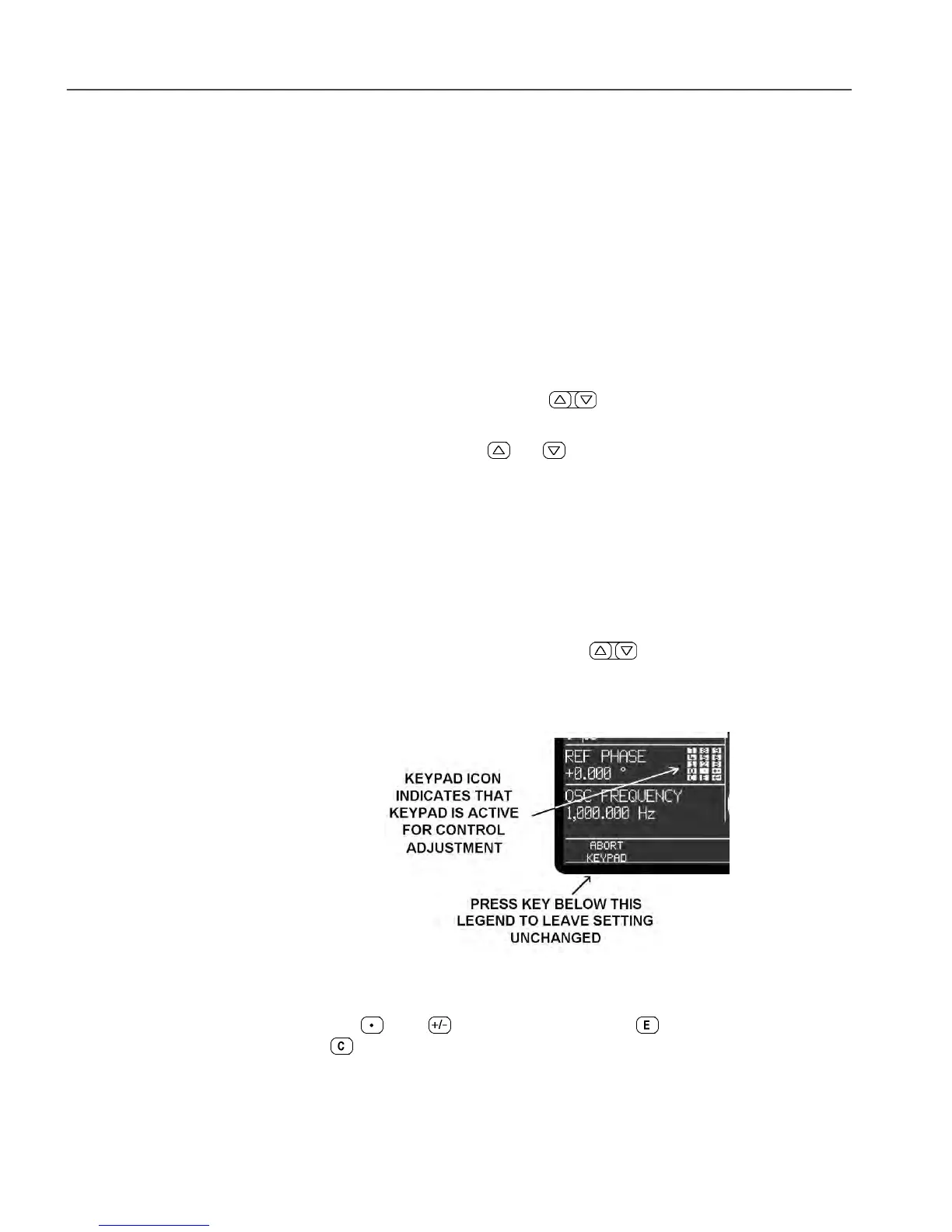Chapter 4, FRONT AND REAR PANELS
4-2
4.1.04 LCD Screen
This screen, the five pairs of keys on each side of it and the four keys under it are
used to adjust the instrument's controls and display the measured outputs, by the use
of a series of menus. The model 7270 is a very sophisticated instrument with many
features and consequently had the traditional approach of using one button per
control been adopted the front panel would have been very large. Adopting a menu-
based control and display system, with the function of each key being dependent on
the displayed menu, gives a much cleaner design, with controls that need to be
changed only occasionally being hidden in normal use.
The ten pairs of keys on either side of the screen have the following functions,
depending on the displayed menu.
Function 1: To adjust the setting of a control.
If a control, such as time constant, full-scale sensitivity, or input coupling mode is
displayed on the screen then the adjacent key pair is used to adjust its setting.
Some controls, such as AC Gain and full-scale sensitivity, have only a limited range
of settings, and so the use of the and keys allows the required value to be
chosen with only a few key-presses. Other controls, such as the internal oscillator
amplitude and frequency, may be set over a wide range of values and to a high
resolution. In these cases a significant number of key-presses might be needed to set
the control to the required setting.
Adjustment of the latter type of control is made easier by any of the four methods
described below.
Keypad Data Entry
Pressing the single key below the lower left-hand corner of the screen marked
SET CONTROL followed by either side of the key adjacent to a control
requiring numerical entry activates the keypad. This is indicated by the
SET CONTROL key changing to ABORT KEYPAD and a small keypad icon
appearing adjacent to the selected control, as shown in figure 4-2.
Figure 4-2, Numerical Entry Keypad
Use the keypad to enter the required setting of the control. The numerical keys and
decimal point , sign and engineering exponent keys are self-explanatory,
while the (clear) key can be pressed at any time to clear any digits already
entered, which are shown in dimmed text next to the control.

